The month has been wet and cold, every week seems to be a combination of a few sunny often warm days, followed be several days of wet, sometimes intense rain days, with a couple small episodes of snowfall, but nothing lasting more than a day or so.
The roof has held up fairly well in it’s temporary configuration, and there will likely be no changes made till summer, although occasionally the wind rattles the metal sheets and I cross my fingers .
The increased solar panels and battery bank size have weathered the many days in a row at times with no real trouble. I do treat the sunny days with an extra bit of personal energy to take care of the things that draw the most electricity. Charging my tool batteries, washing clothes, etc, and though they don’t take great amounts of energy or time, remembering to do them in a timely manner can be a challenge, since sunny days I’m more likely to be outside as well.
I discovered this past weekend that my charge controller is not a true MPPT one. This means the 36 volt current coming from the solar panels has largely been wasted, and although I had been planning to buy a new small AC refrigerator to replace the propane one, I decided to scrap that idea and started looking for DC refrigerators in an effort to save money and conserve energy.
Which is the next project, although it will likely be a slow paced one. It will involve getting a new dc compressor charged with the new world standard refrigerant. Isobutane and isopropane. I finally found a somewhat obscure document last night documenting test results from an experiment that replaced freon R134a in a conventional fridge with R600a . It will require a new compressor, and I will try and find a shop to do that for me,(as soon as I find a suitable refrigerator body for my new frankenstein monster refrigerator.
While new dc high efficiency fridges cost upwards of 1200$, the one I plan to put together should cost around 400. It will require about 30% less electricity than an ac refrigerator which requires an inverter, and there should also be some efficiency gains with the new coolant.
After writing the last couple paragraphs I got a new charge controller in the mail, wonderful, it is multiplying amperage just like it’s supposed to, and has a couple of other features I will be exploring, but that is one part of the energy solution here.
The ponds got some more attention over the last few days of the month, everything from chipping up brush piles and general cleanup of the surrounding areas.
On the keeping machinery functional side of things I was able to start and run both chippers and that will help keep gas fresh and carburetors clean.
As a final act with the backhoe in February I dug up the rosa rugosa in the garden, it develops a net of roots underground, and I’m very curious to find out how sensitive it may be to being separated and transplanted. I have about half of the clump still in a big ball of earth just in case the individual transplants don’t survive with the minimal care I’ve given them.
The DSR stove has been performing better since I installed the steel fittings at the hot water exit from the tank. It is easy to take a temperature reading there to monitor the heat of the tank, but the location of the fitting on the side of the tank makes the system a bit awkward in use, and normal operation heating unpressurized water wastes a fair amount of water , and I plan to only use tanks from now on with a hot water fitting on the top of the tank.
The Koi are doing quite well, I feed several times a day, and wait for them to come to the top of the tank before I start dropping in food, and, when they all go back to the bottom of the tank I stop feeding. This means there isn’t extra food floating around, and they are slowly losing their fear of me.
I have a plan to enlarge the kitchen garden pond into a much larger koi pond, but probably in the short term I will reinforce the repairs on one of the smaller preformed plastic ponds and use it for the first part of the summer while their main pond is taking shape. I plan to buy a regular pond liner and really make an attempt to keep the water clear, possibly even have it deep enough to swim in.
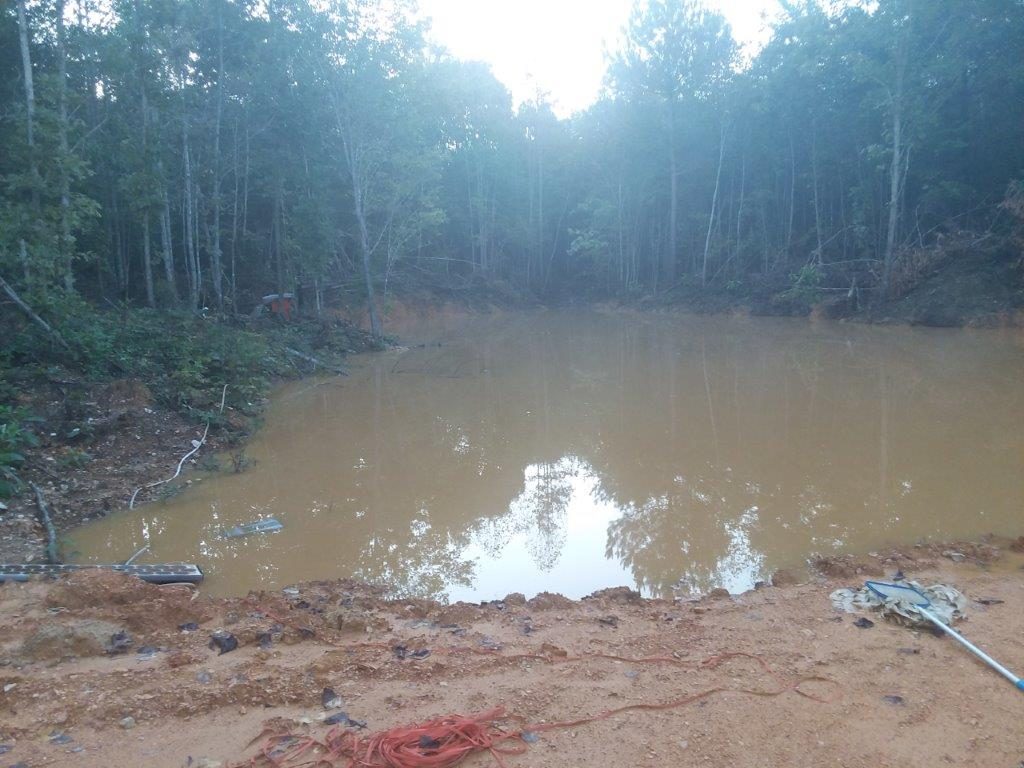
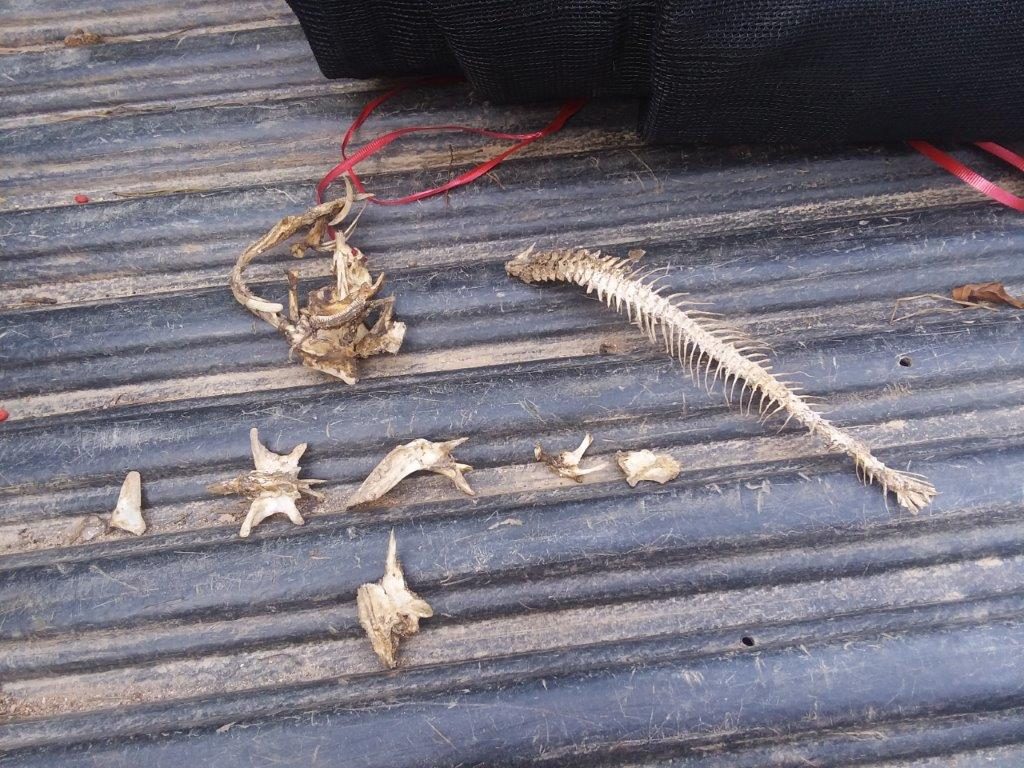
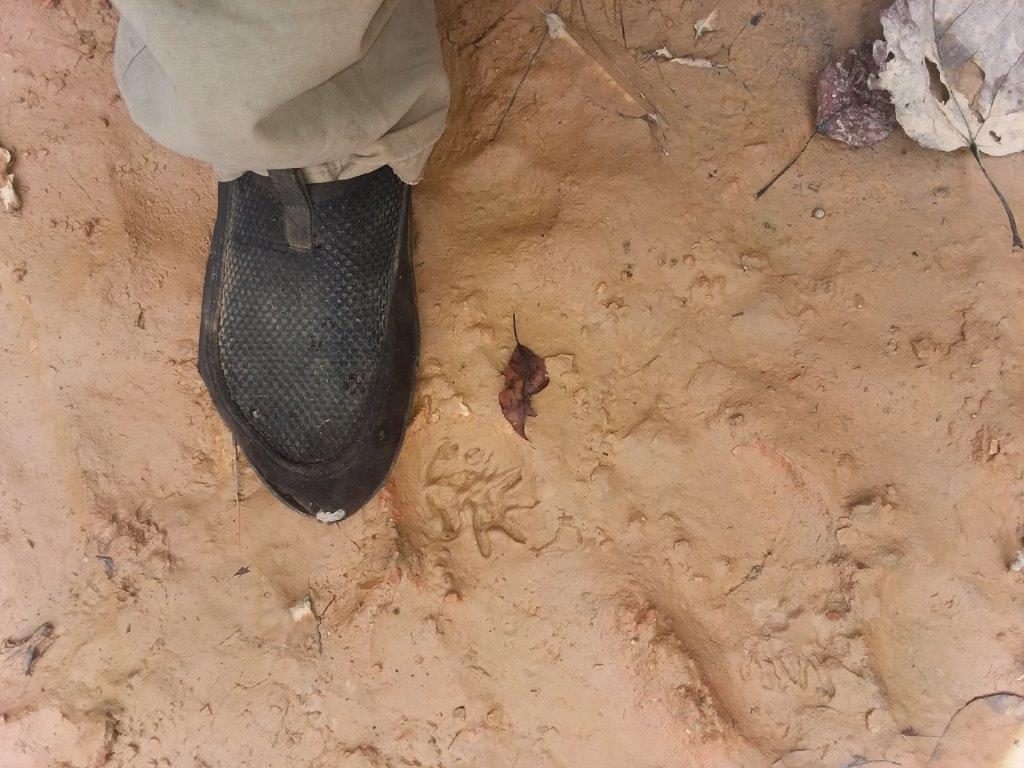
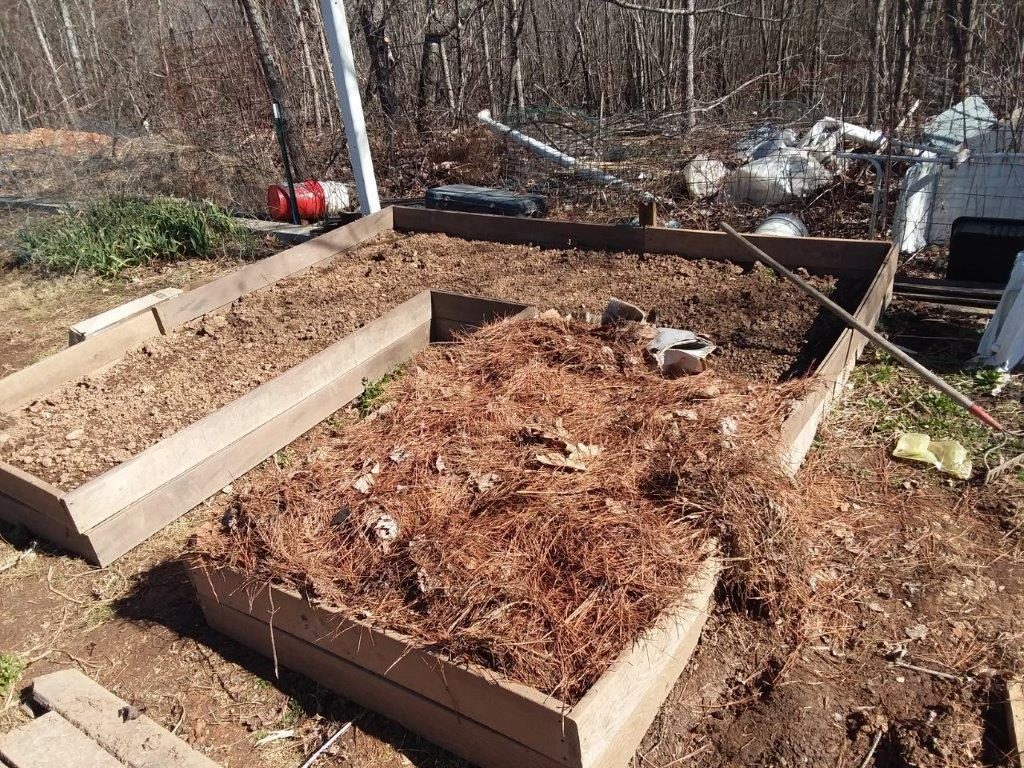
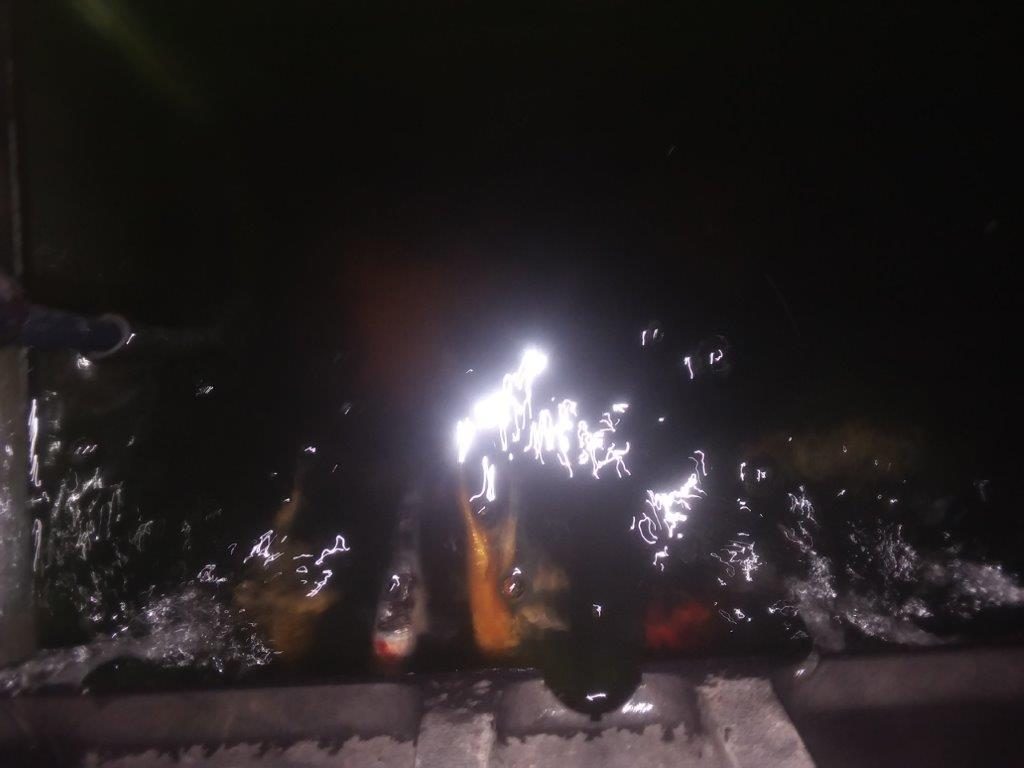
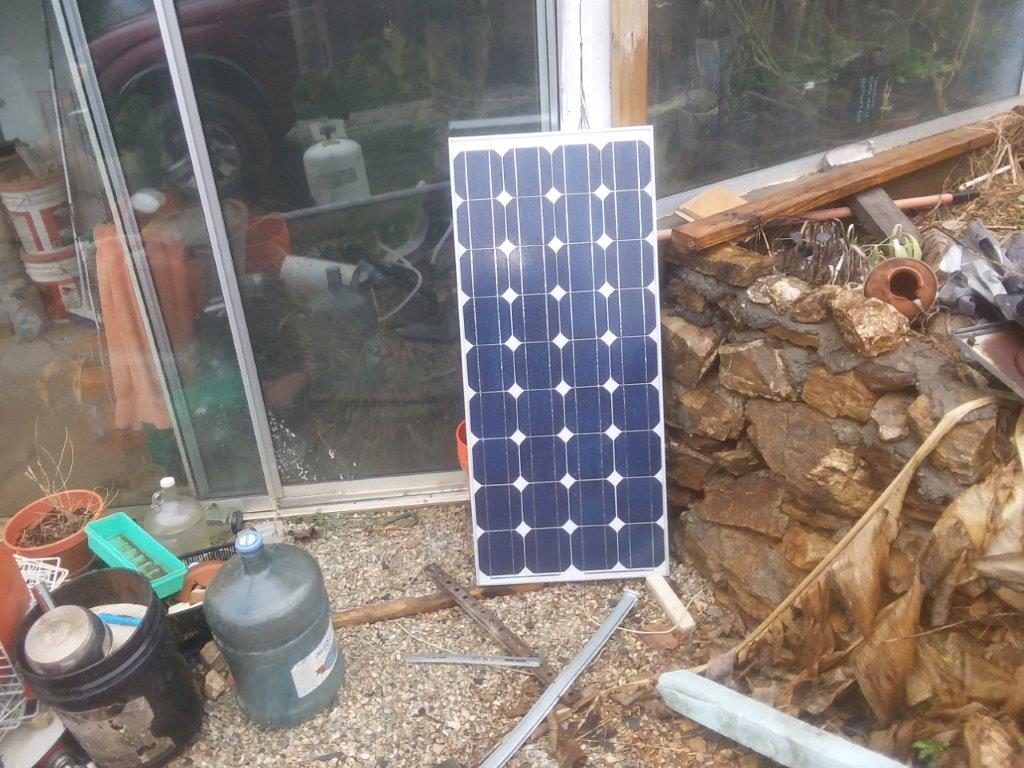
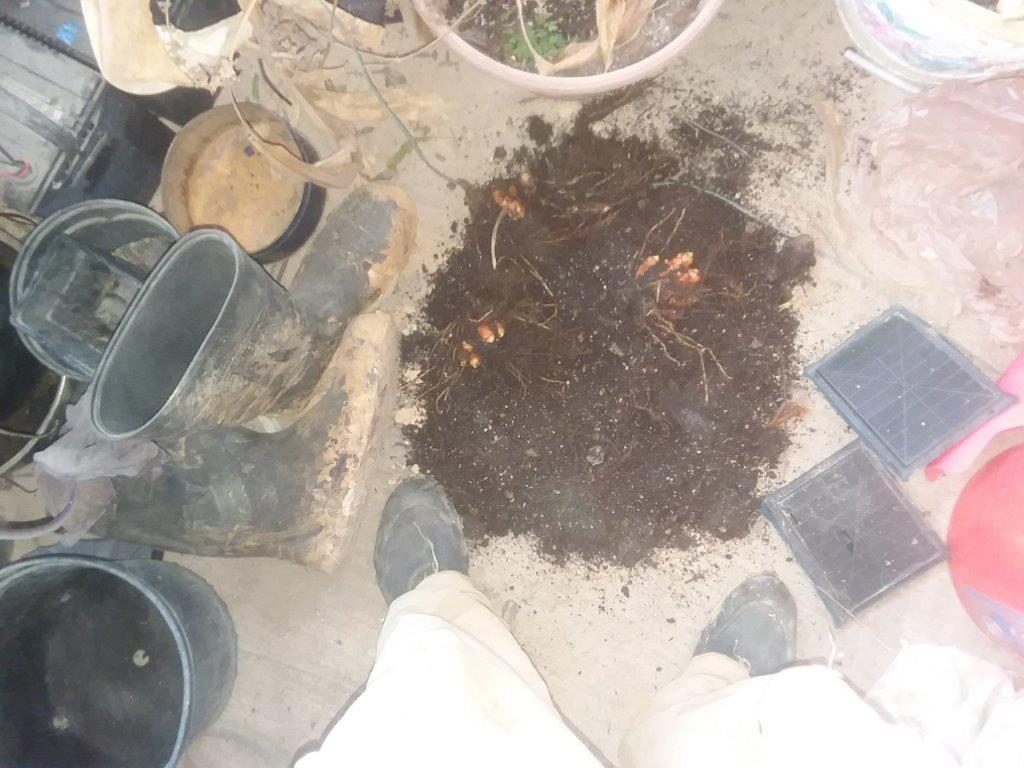
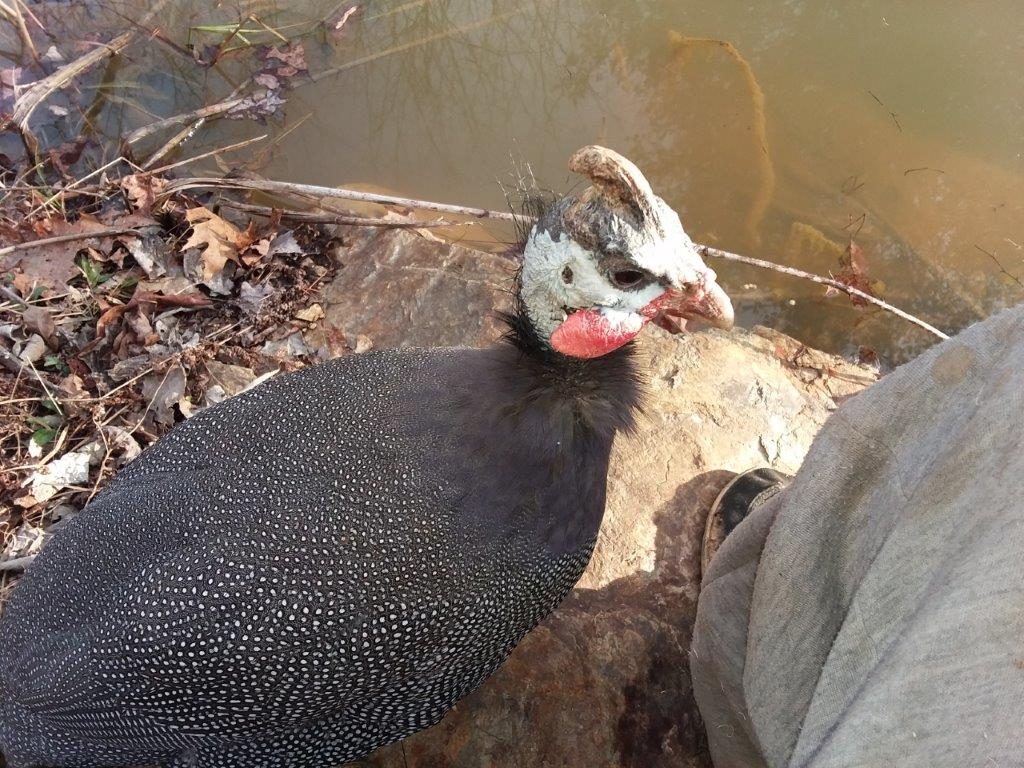
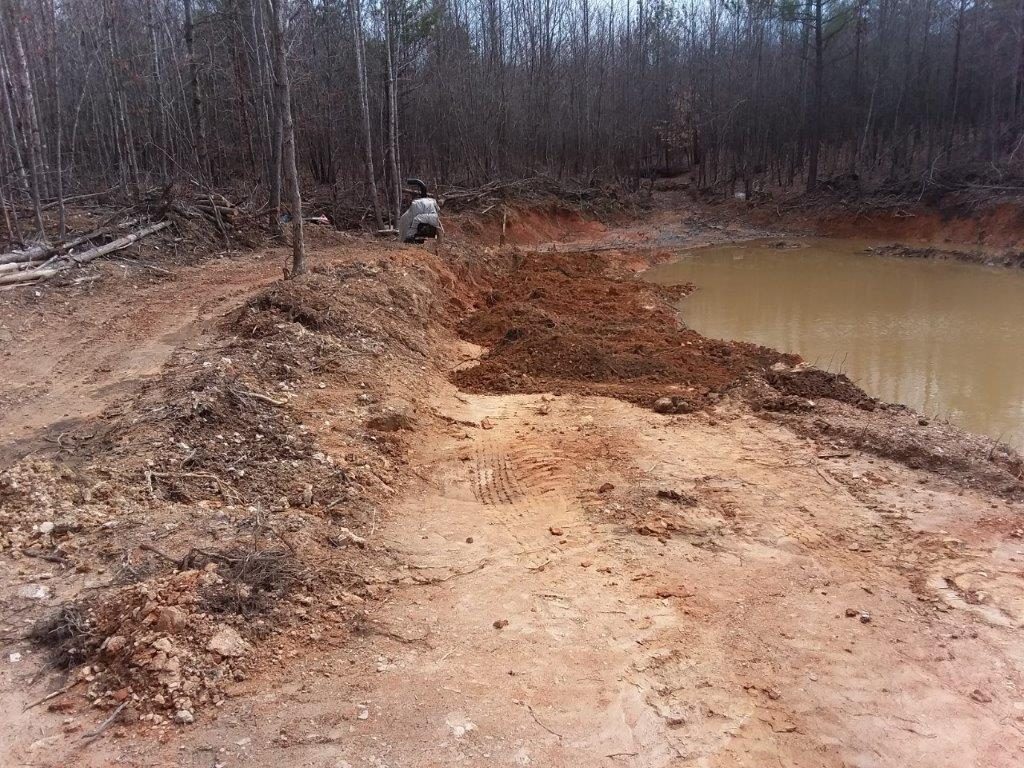
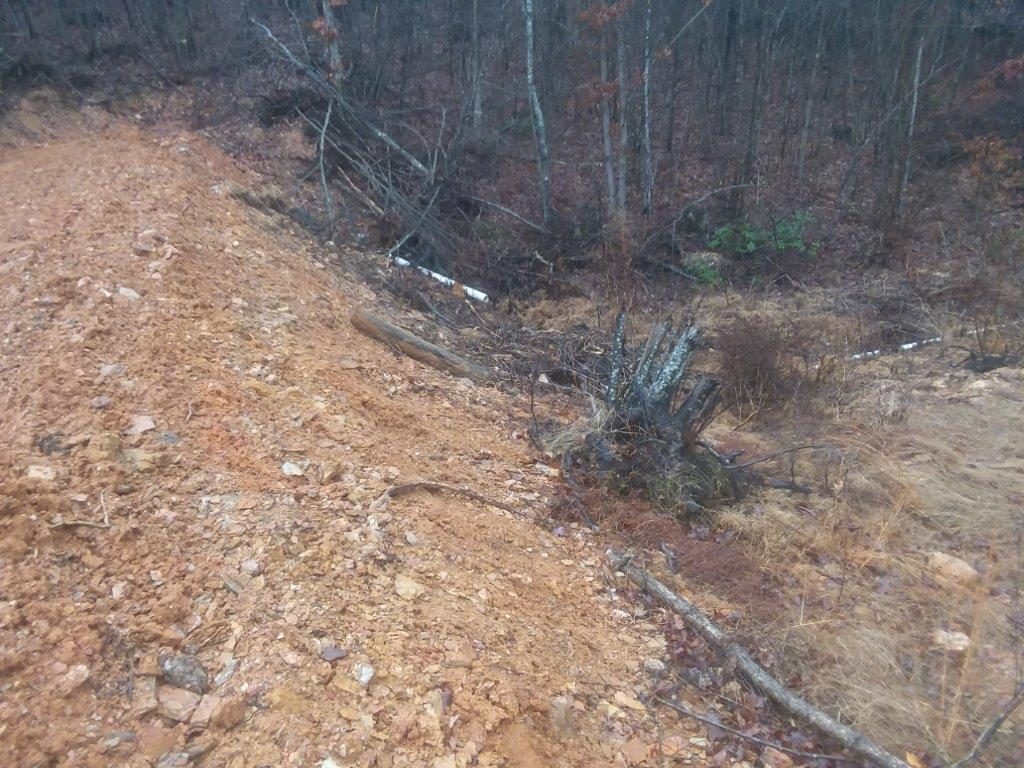
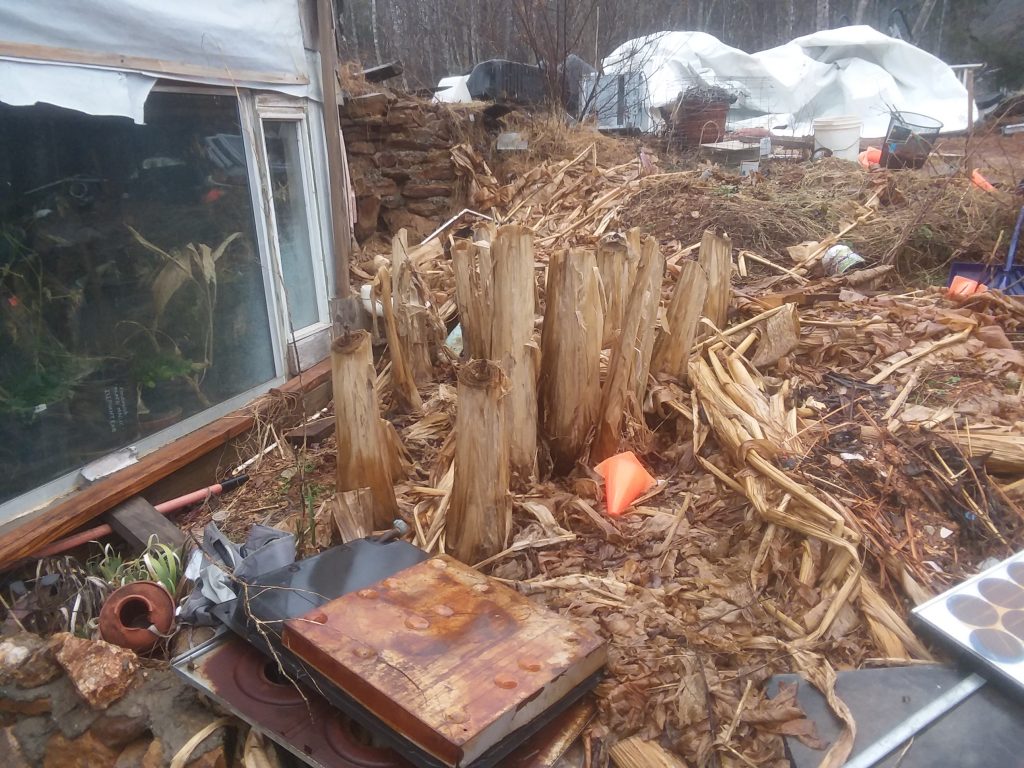
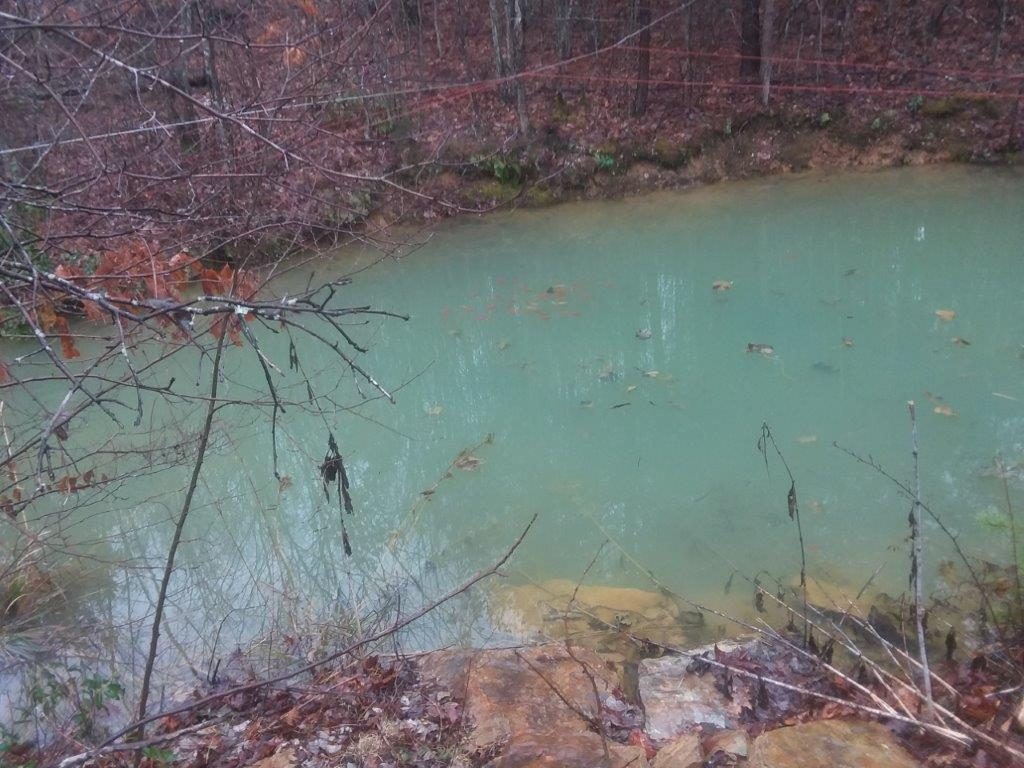
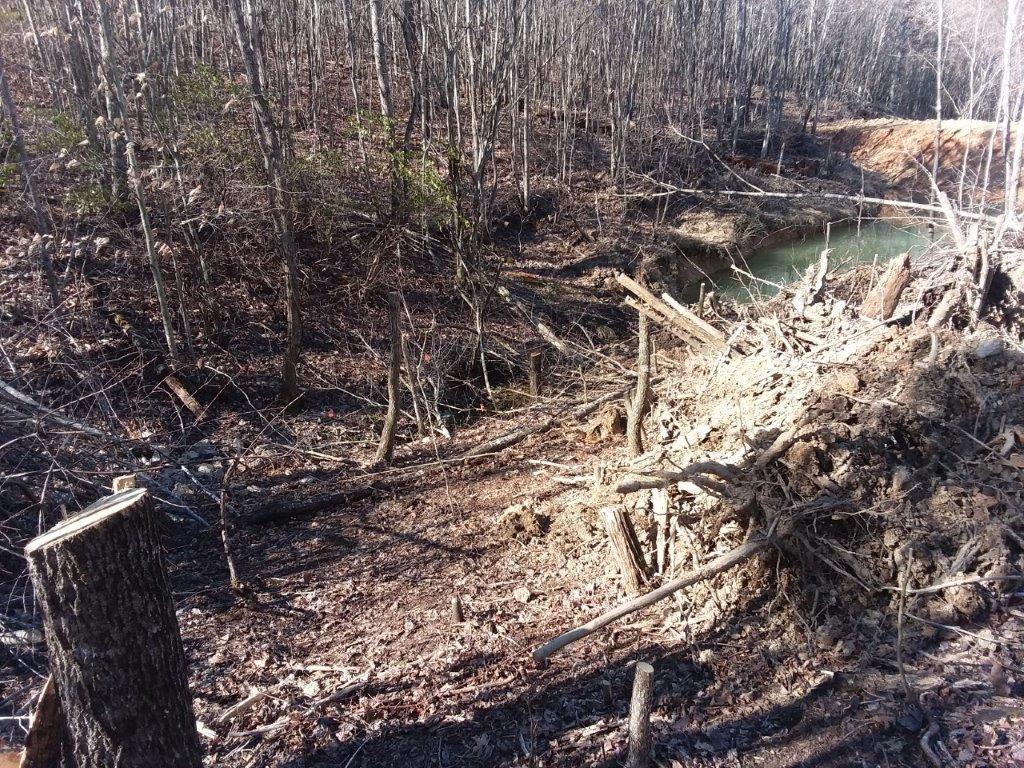
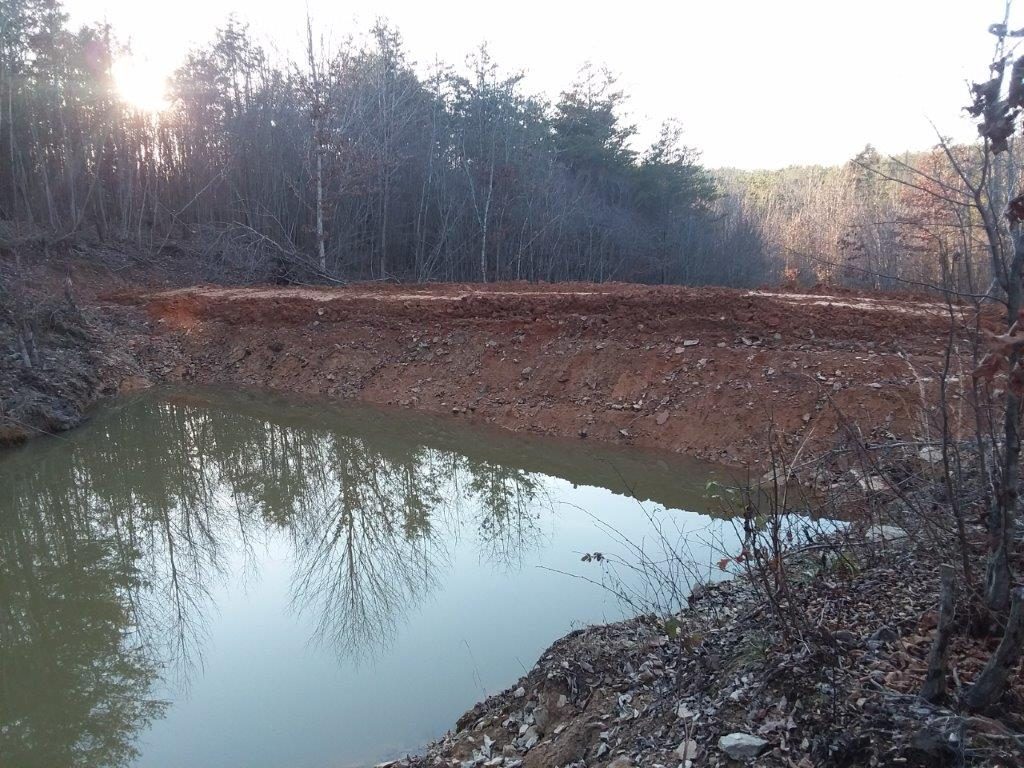
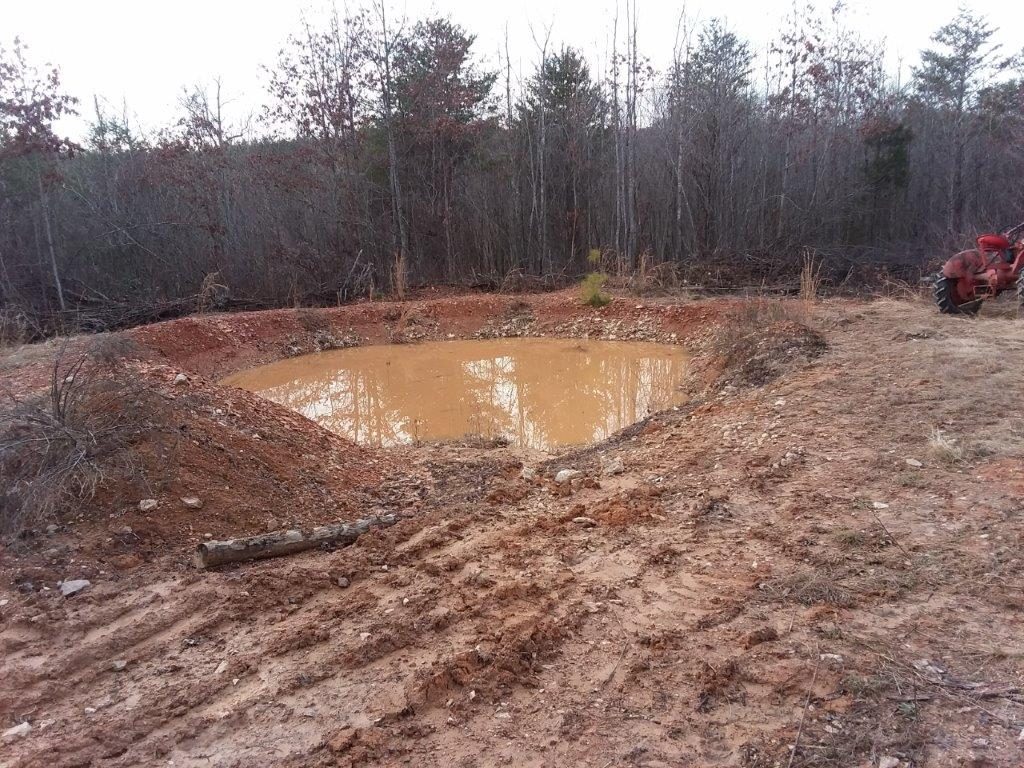
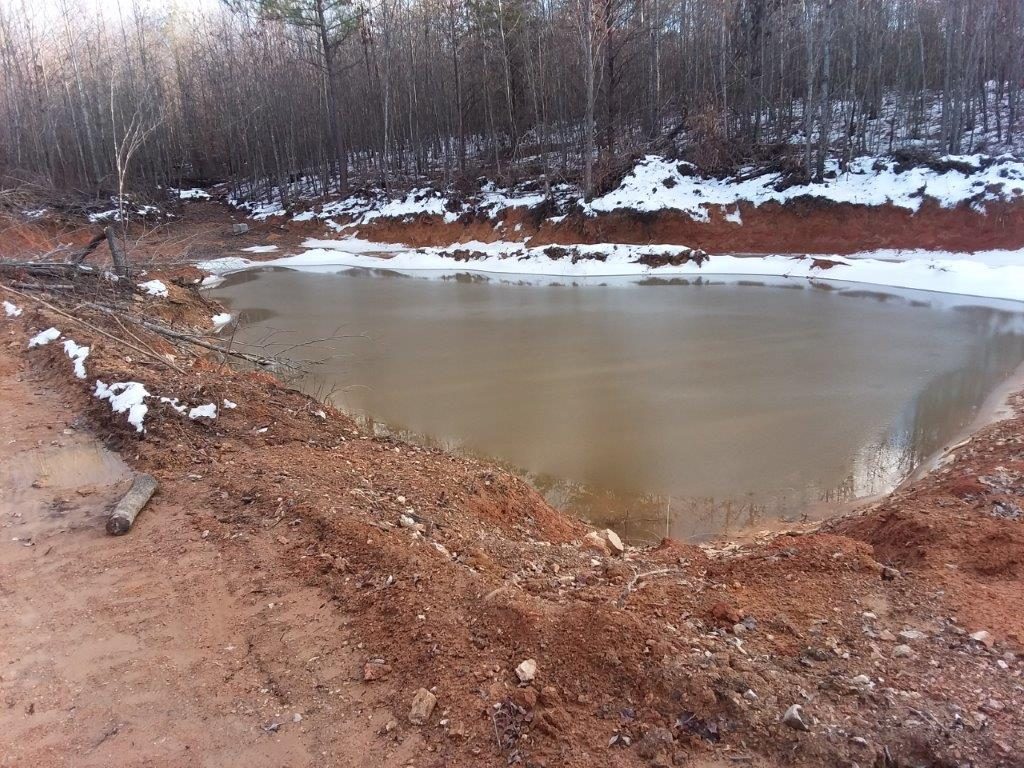
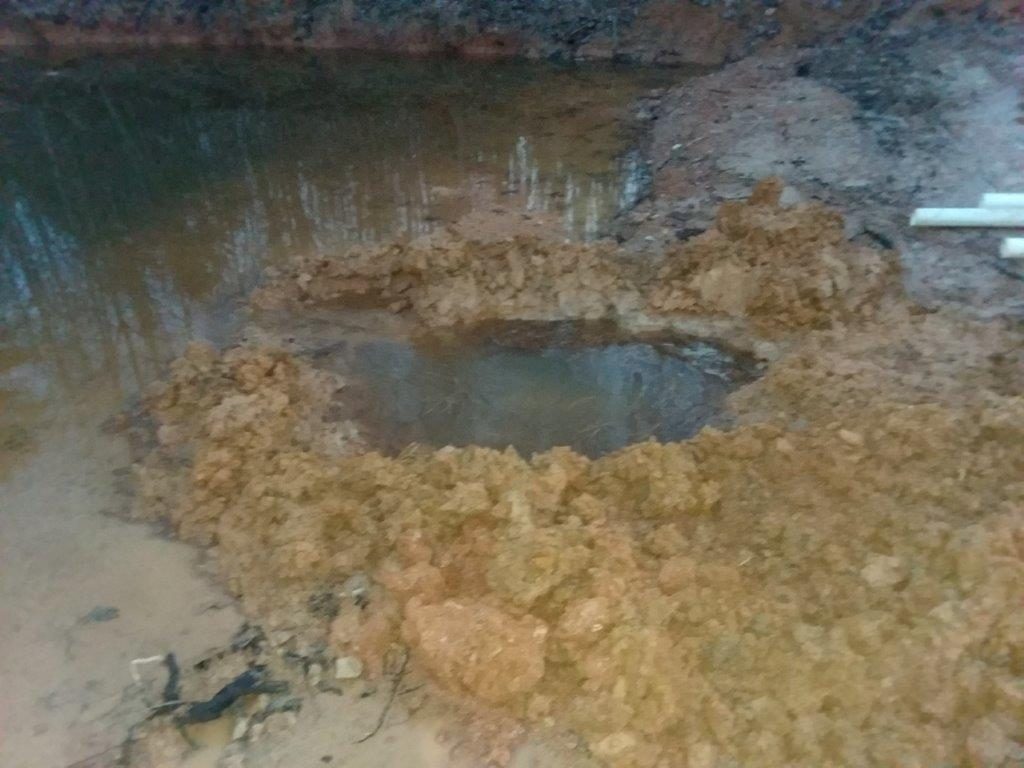
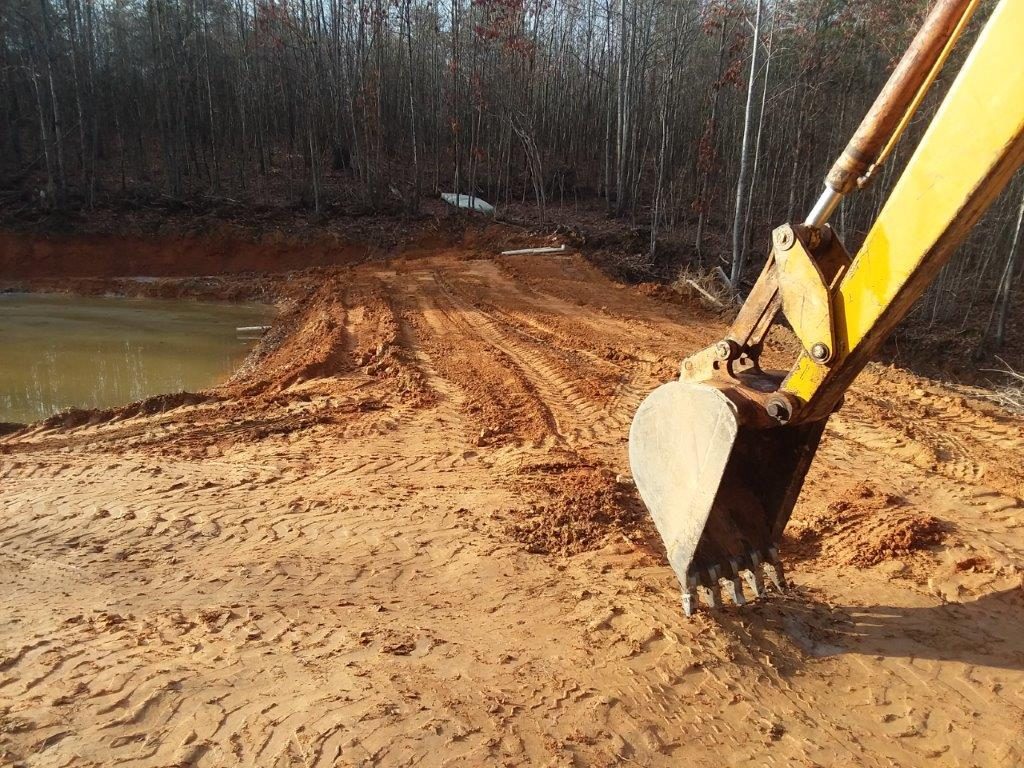
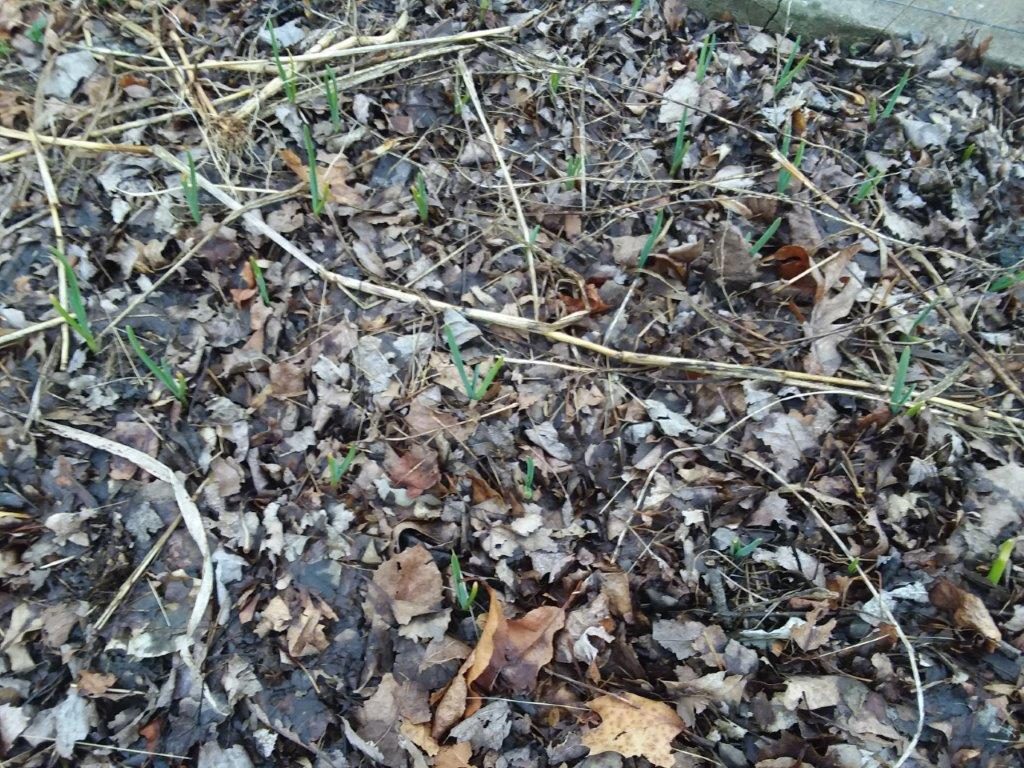
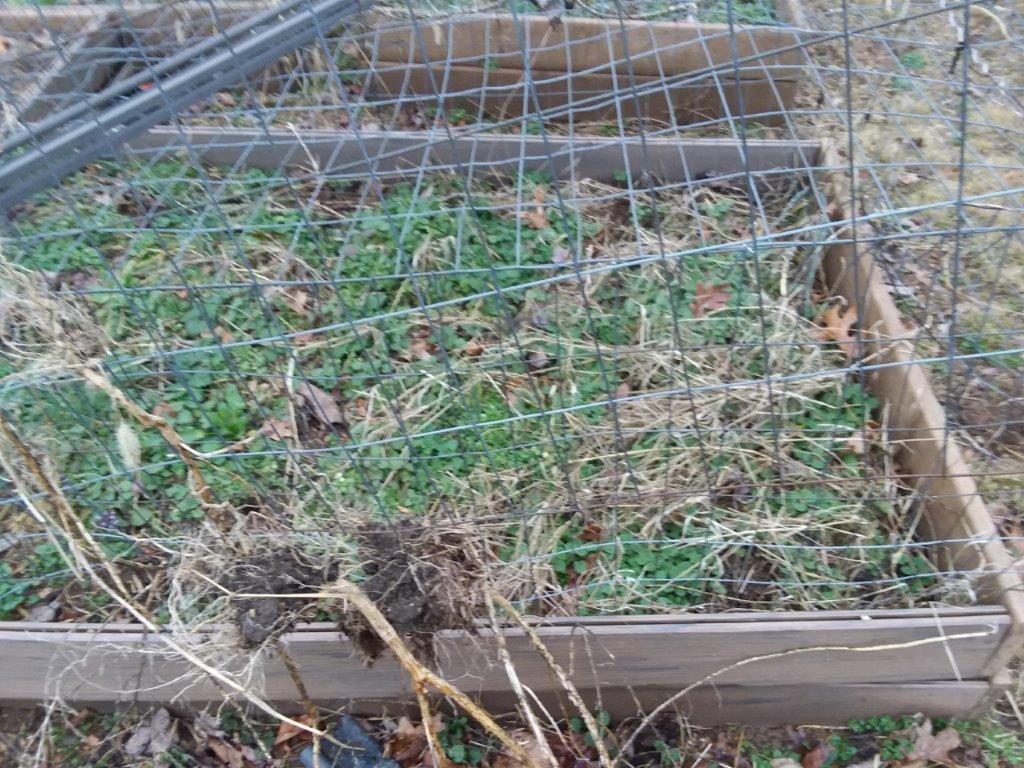
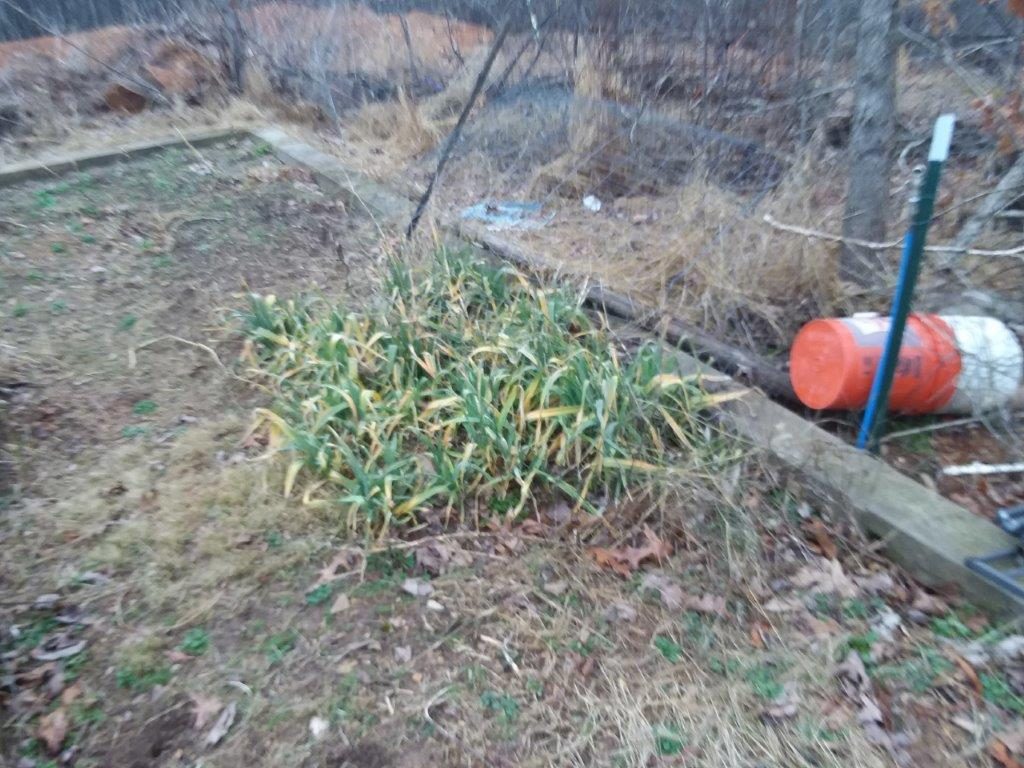
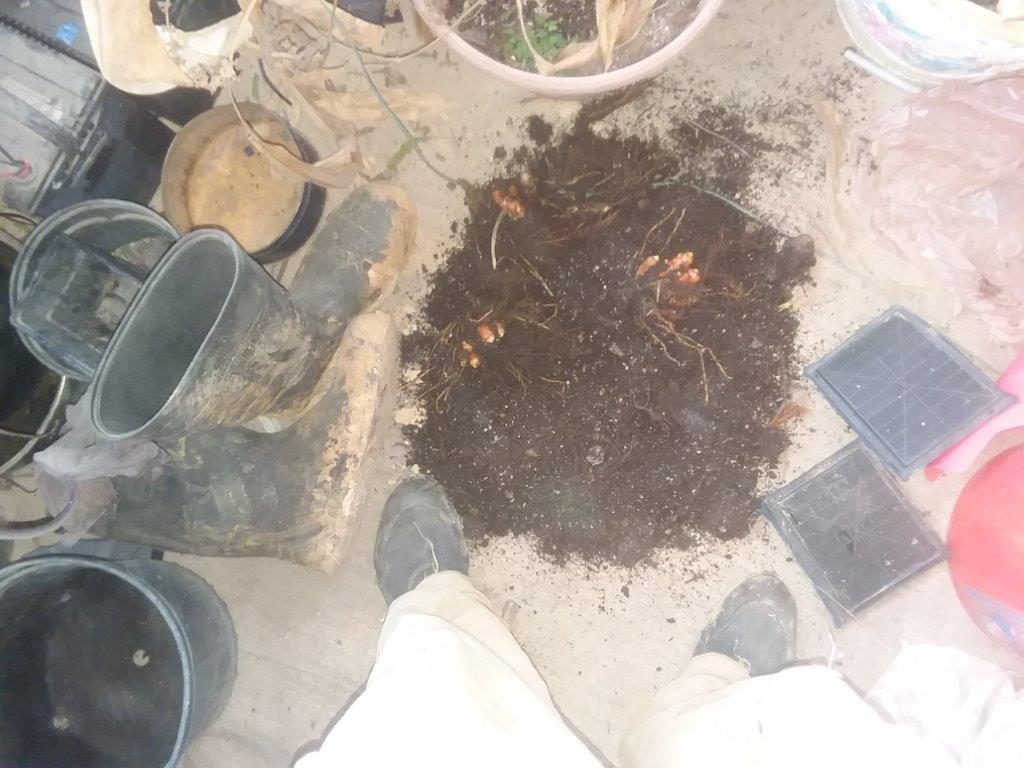
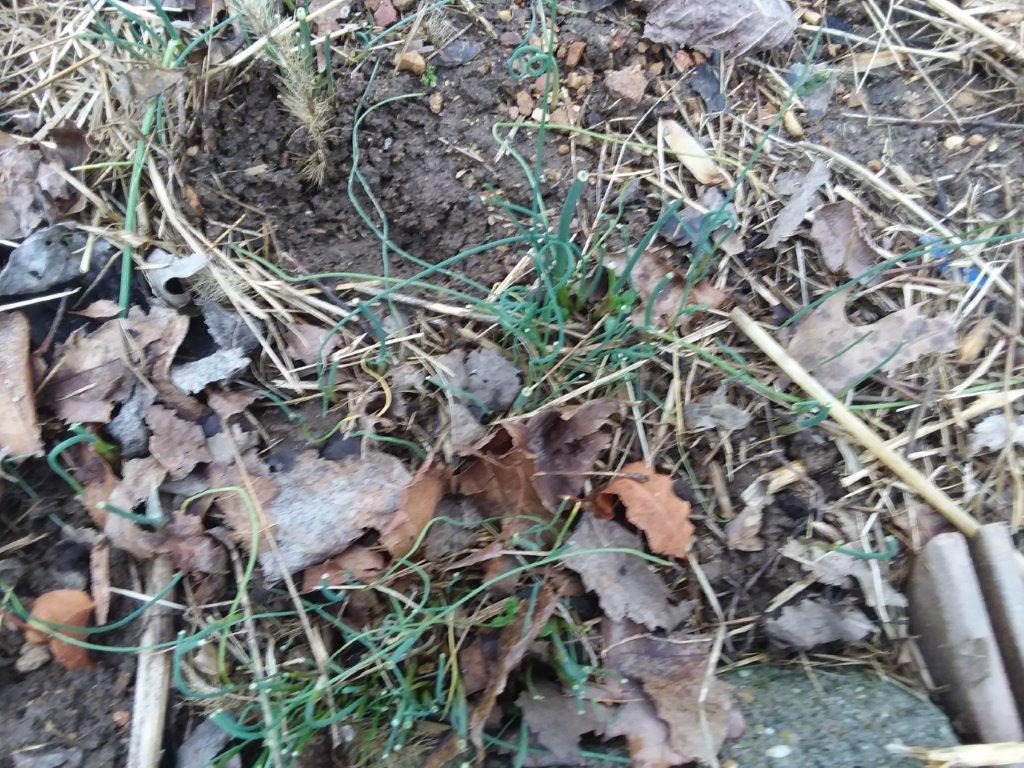
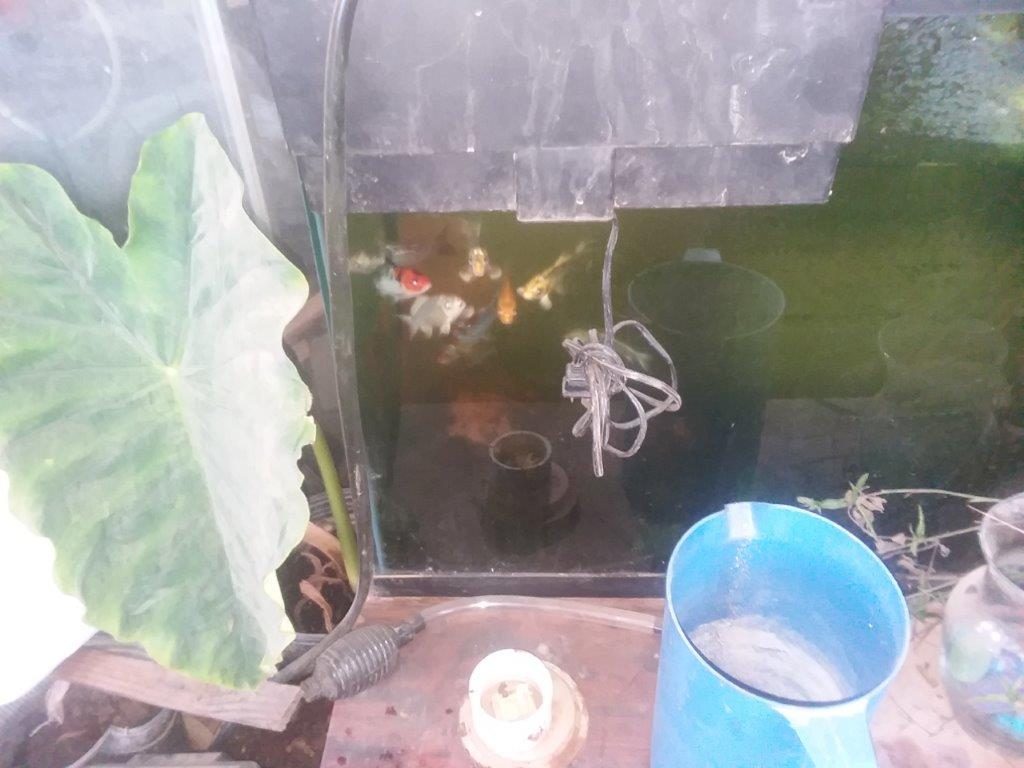
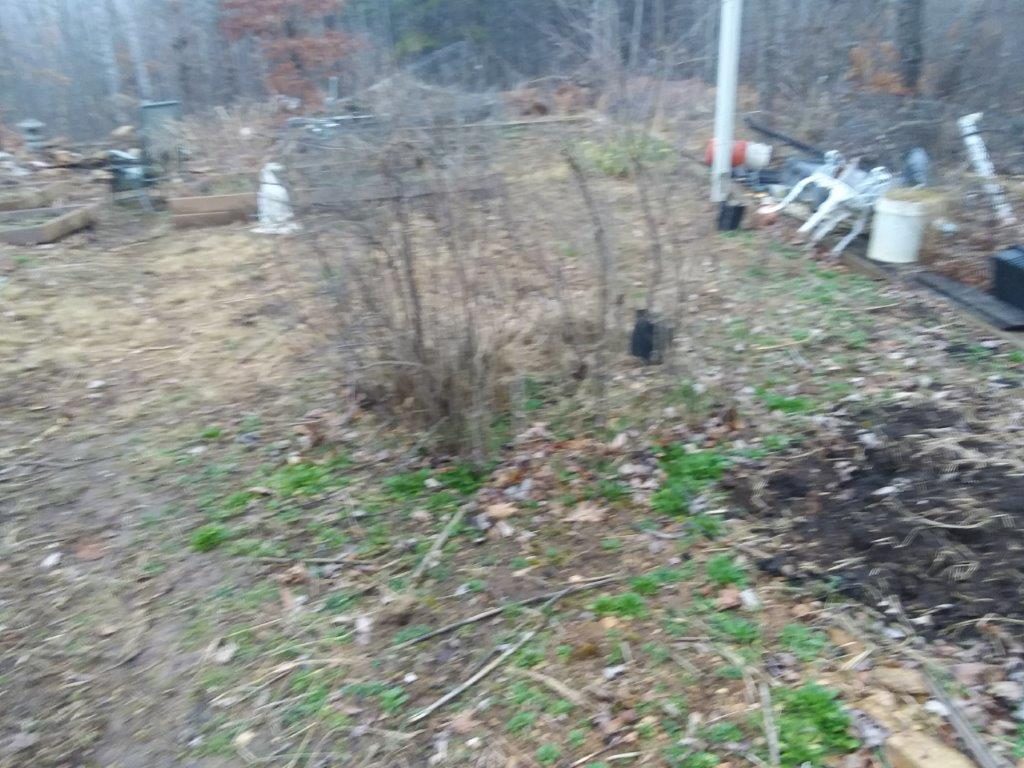
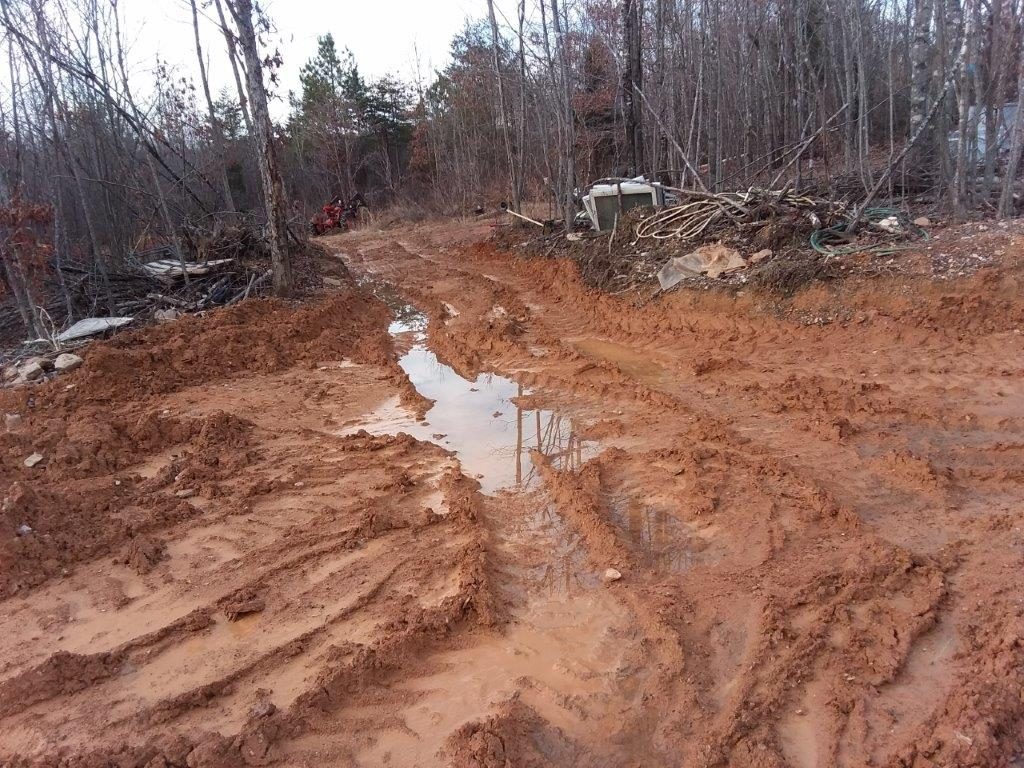
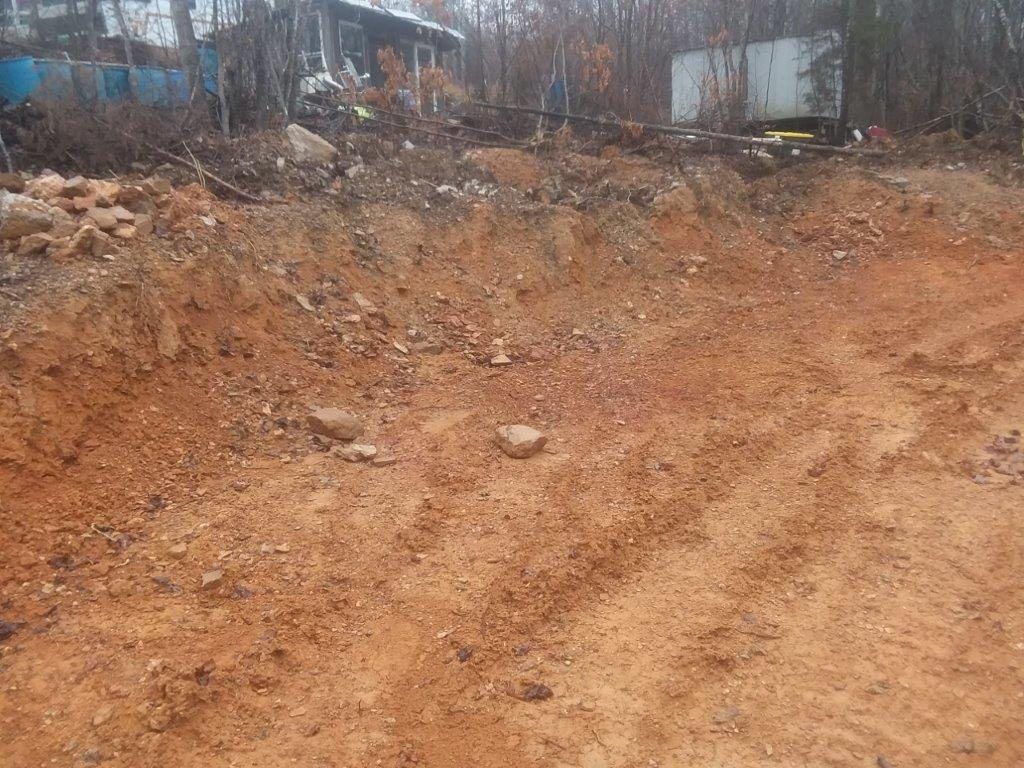
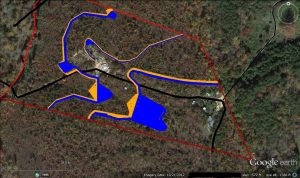
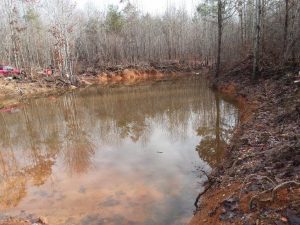
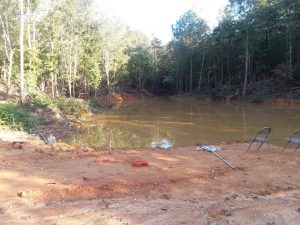 upper dam,
upper dam,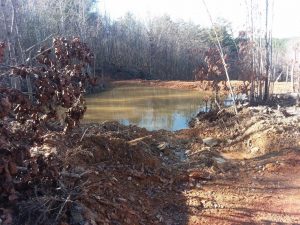
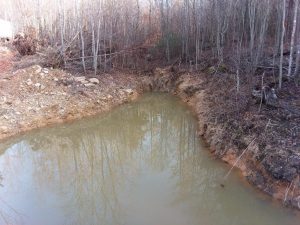 middle dam,
middle dam,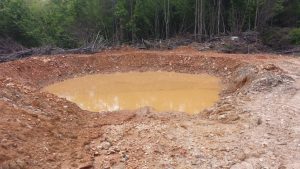 and contour pond. The pond just above the contour pond is really just a hole in the ground that doesn’t hold water, and i call it somewhat optimistically the ridge point pond. The very top pond is a potential gully dam , that may never actually be completed since it overlaps the property line and would require a joint cooperation .
and contour pond. The pond just above the contour pond is really just a hole in the ground that doesn’t hold water, and i call it somewhat optimistically the ridge point pond. The very top pond is a potential gully dam , that may never actually be completed since it overlaps the property line and would require a joint cooperation .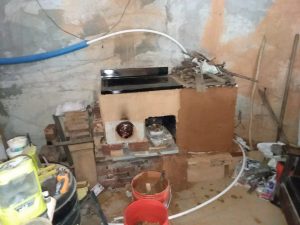
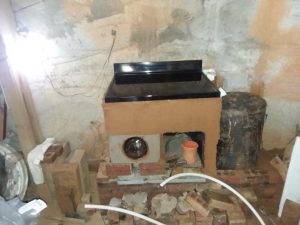
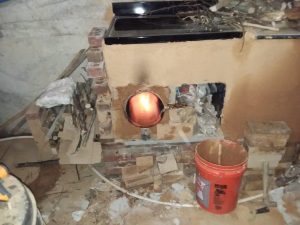 note the new visions fry pan “door” to the batch box, The lid I was using had broken into two pieces possibly from rough handling, possibly the lids are not as thermally robust as the pans
note the new visions fry pan “door” to the batch box, The lid I was using had broken into two pieces possibly from rough handling, possibly the lids are not as thermally robust as the pans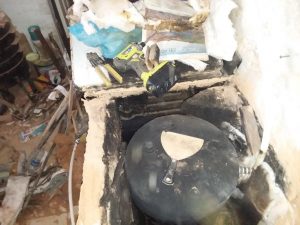 These gasses that are further cooled start to sink to the bottom as they circulate. The “stack” entrance is below the bottom of the tank in back of the system, so the exhaust comes in contact with about 270 degrees of the surface of the tank, with some minor contact top and bottom. Note that this stack is actually a powered exhaust by a very cheap, low wattage (about 10)fan. This provides a more or less guaranteed exhaust even at startup, and the exhaust is so cool (around 100F) that more robust (and expensive) equipment is not needed.
These gasses that are further cooled start to sink to the bottom as they circulate. The “stack” entrance is below the bottom of the tank in back of the system, so the exhaust comes in contact with about 270 degrees of the surface of the tank, with some minor contact top and bottom. Note that this stack is actually a powered exhaust by a very cheap, low wattage (about 10)fan. This provides a more or less guaranteed exhaust even at startup, and the exhaust is so cool (around 100F) that more robust (and expensive) equipment is not needed.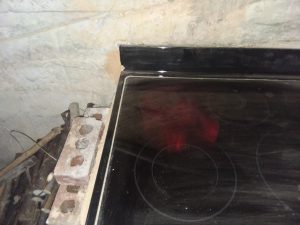 Perhaps using insulated Fire brick at the port would get the port to temperature more quickly (it is currently standard , full fire brick), and adding ceramic fiber blanket over the stove top might also enhance the temperature build up by reducing convection and radiation losses there.
Perhaps using insulated Fire brick at the port would get the port to temperature more quickly (it is currently standard , full fire brick), and adding ceramic fiber blanket over the stove top might also enhance the temperature build up by reducing convection and radiation losses there.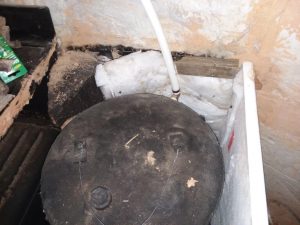 Note the opening to the left of the tank, exhaust gases travel counter clockwise around the tank once the insulated top is installed
Note the opening to the left of the tank, exhaust gases travel counter clockwise around the tank once the insulated top is installed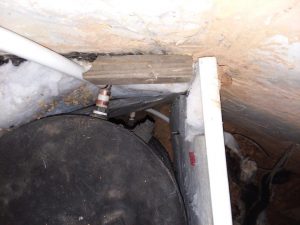 Two water connections to the tank, hot through the upper pipe, cold through the pipe that exits the enclosure botom
Two water connections to the tank, hot through the upper pipe, cold through the pipe that exits the enclosure botom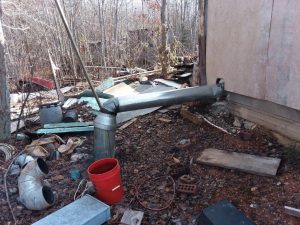 I prefer to think of the junk you see as a parts depository, the stove pipe comes up in the center of a poured concrete 2′ wall from the basement, runs horizontally, then down to the ground
I prefer to think of the junk you see as a parts depository, the stove pipe comes up in the center of a poured concrete 2′ wall from the basement, runs horizontally, then down to the ground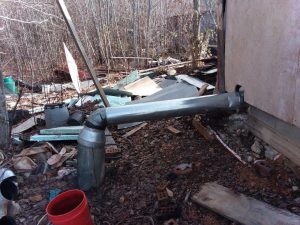 The wider area of the pipe after the angle pointing down houses a small fan,
The wider area of the pipe after the angle pointing down houses a small fan,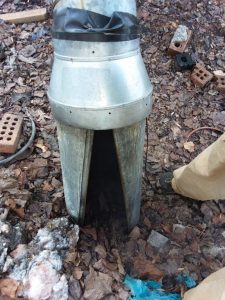 Though it looks solid from the sides, there is actually quite a wide openiong for the exhaust to exit. This configuration keeps the fan dry, allows for a small amount of falling for the exhaust as it cools, and protects pretty well against strong wind
Though it looks solid from the sides, there is actually quite a wide openiong for the exhaust to exit. This configuration keeps the fan dry, allows for a small amount of falling for the exhaust as it cools, and protects pretty well against strong wind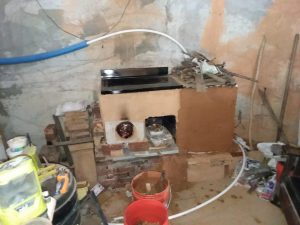 The tank enclosure has an insulated top and sides, with just enough room to circulate exhaust around and over the tank to transfer as much heat as possible to the water.
The tank enclosure has an insulated top and sides, with just enough room to circulate exhaust around and over the tank to transfer as much heat as possible to the water.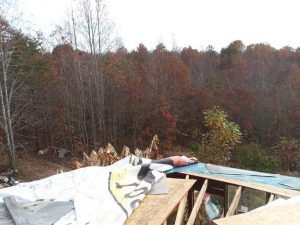 If it ain’t broke…. well, this was broke, out with the tarp, these first two roof sections are a bare beginning, with lots to do before they are in their final configuration, so you could say this is still temporary, but it definitely is moving toward a finished roof.
If it ain’t broke…. well, this was broke, out with the tarp, these first two roof sections are a bare beginning, with lots to do before they are in their final configuration, so you could say this is still temporary, but it definitely is moving toward a finished roof.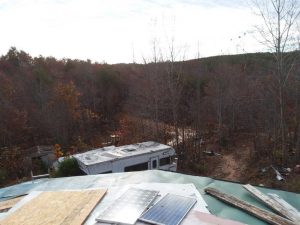 move the solar panels to the side ,slightly less power, but at least some continuity–these will be replaced with larger panels when this project is done.
move the solar panels to the side ,slightly less power, but at least some continuity–these will be replaced with larger panels when this project is done.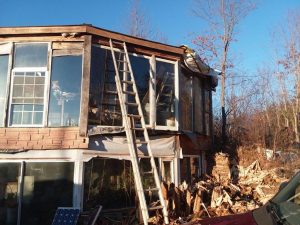 new fascia board helps to stabilize rafters
new fascia board helps to stabilize rafters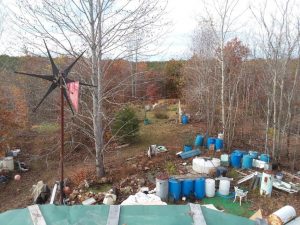 When I look around from this vantage the trash really jumps out at me. But in that “mess” is water storage, structural elements, tools and actual garbage. I know, get busy!!
When I look around from this vantage the trash really jumps out at me. But in that “mess” is water storage, structural elements, tools and actual garbage. I know, get busy!!